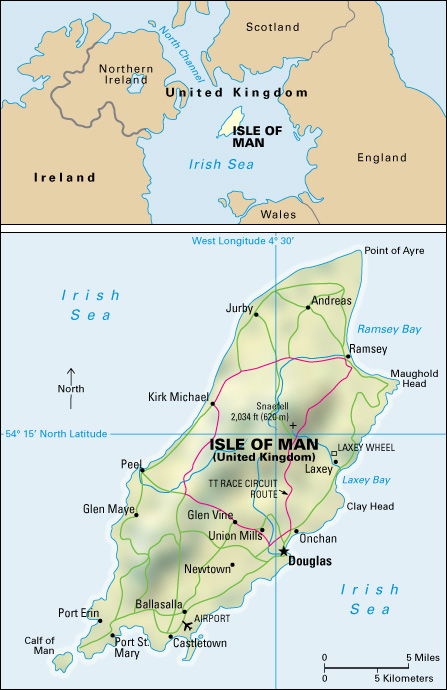Man, Isle of, is an island in the Irish Sea. It is a British crown dependency and lies about halfway between England and Ireland and about 20 miles (32 kilometers) south of Scotland. The island has an area of 221 square miles (572 square kilometers) and a population of about 92,000. Douglas, the capital city, lies on the east coast.

Most of the Isle of Man’s people have Celtic ancestry, and a few speak a language called Manx Gaelic as well as English. A breed of cats called Manx, most of which have no tail, originated on the island.
There are several theories about the origin of the island’s name. One of the most widely held theories is that the name Man comes from the Celtic word monadh, meaning mountain. Most of the Isle of Man is covered by farmland and moors (wastelands of coarse grasses and evergreen shrubs called heather). A low mountain chain runs the length of the island. The highest peak, Snaefell, rises 2,034 feet (620 meters) above sea level.
Financial services form the island’s leading economic activity. The Isle of Man’s laws and tax policies encourage companies from around the world to register their headquarters on the island. The Isle of Man is a popular summer resort for the people of the United Kingdom and Ireland. Other economic activities include agriculture, fishing, and some high technology businesses.

The Isle of Man was ruled at various times by Ireland, Wales, Norway, Scotland, and England. Great Britain (now the United Kingdom) bought the Isle of Man from local rulers in 1765 and has controlled it ever since. However, British laws do not apply to the Isle of Man unless they specifically name the island. A British lieutenant governor represents the United Kingdom on the island. A 1,000-year-old parliament called Tynwald Court regulates internal affairs.
